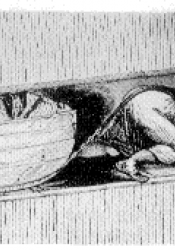The Employment and Conditions of Children in Mines and Manufactories. Published.
“The Employment and Conditions of Children in Mines and Manufactories” was a document published following a three year investigation into the horrific and morally questionable conditions surrounding children forced to work in coal mines around Britain. This document contained reports of children, male and female, as young as four years old being sent to work. The commission itself was established by Anthony Ashley Cooper, the 7th earl of Shaftesbury and the report was compiled by Richard Henry Horne, a close friend of author Charles Dickens. This report was the first to shine a light on the mistreatment and exploitation of children in the workforce and was the first time British upper-class had been exposed to such graphic images of this exploitation. Ultimately, this publication would directly lead Parliament's legislation against the employment underground of all females and of boys under ten years of age. Furthermore this report would be followed by a second report interviewing over 1500 child workers and finally culminating in the Factory Act of 1844. What made this report so effective were the series of disturbing illustrations that accompanied it. Each depicting the demeaning and dangerous tasks these children were forced to carry out in the mines. Charles Dickens himself was cited as being outraged by the report and it served as inspiration for the writing of many pieces of protest literature including his own literary classic “A Christmas Carol”.
Source
Diana Garrisi (2017) The Victorian press coverage of the 1842 report on child labour. The metamorphosis of images, Early Popular Visual Culture
“Report on Child Labour, 1842.” The British Library, The British Library, 6 Feb. 2014, www.bl.uk/collection-items/report-on-child-labour-1842.
Victorian Web. < http://www.victorianweb.org/ >. Web. 10/14/2020.

